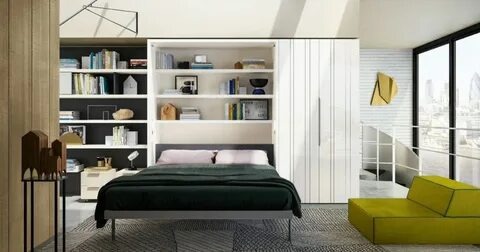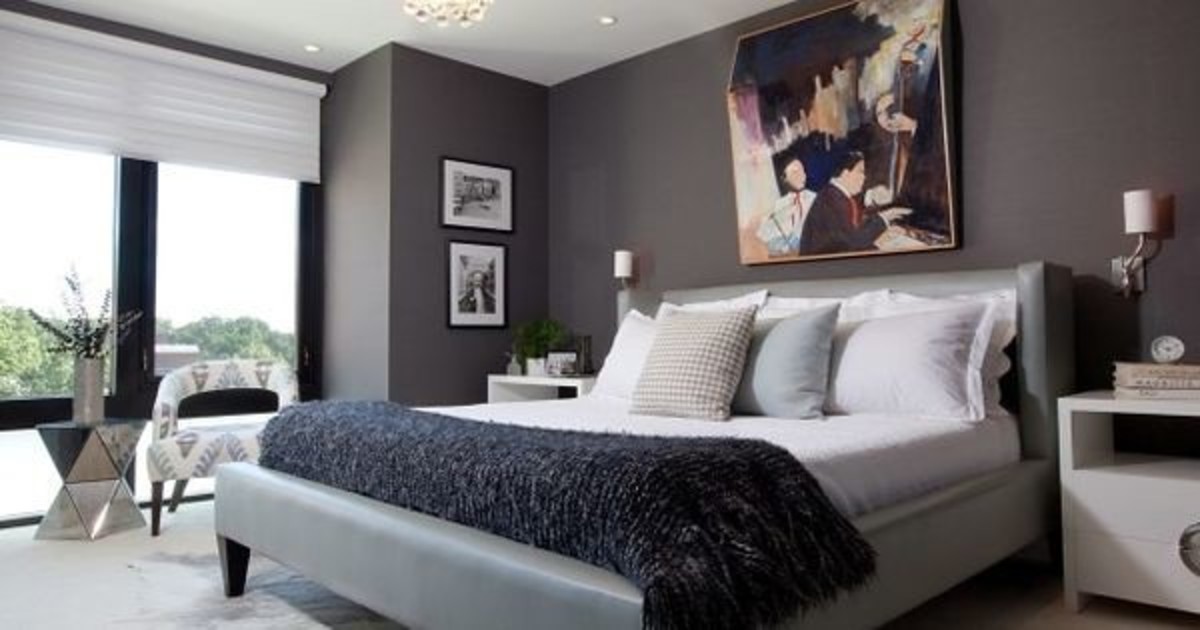A folding bedroom turns a small room into a flexible, multi-use space. Think wall beds that vanish by day, desks that fold flat, and storage that doubles as dividers. Done right, you gain floor area, better circulation, and a calmer look without sacrificing sleep quality. Below is a practical guide to planning, buying, and styling a folding bedroom that works. Homewavey cordially aims to help readers get creative ideas about their home interior designs.
What a Folding Bedroom Actually Is
A folding bedroom is any setup where the sleeping zone can convert quickly for another use. Core elements include:
- A fold-away bed (that might be vertical or horizontal known as Murphy bed)
- Fold-down or wall-mounted work surfaces
- Sliding or folding partitions for privacy on demand
- Storage that hides clutter and reduces visual bulk
Designers routinely use these tactics in small bedrooms, guest rooms that double as home offices, and studio apartments to maximize utility without visual chaos. Architectural Digest and The Spruce both highlight Murphy beds and transforming furniture as proven small-space solutions.
What are The Benefits of Folding Bed

- Recover 20–35 sq ft of daytime floor space in a typical room when the bed folds away
- Make an ideal dual-purpose home & office or other room like hobby room without adding another square footage
- Lessen the clutter and help improve airflow with elevation, the wall-mounted components
- Improve resale appeal in compact homes by showcasing flexibility
You may like to read Interior Design Ideas for Bedroom.
What are The Key Components of a Folding Bedroom
1) The Murphy Bed
The Murphy bed remains the backbone of any folding bedroom. Choose:
- Orientation: Vertical units need more ceiling height; horizontal units project less into the room and can suit kids’ rooms or low ceilings.
- Mechanism: Piston systems run smoother and require less adjustment; spring systems are serviceable and often more affordable.
- Integration: Opt for side cabinets, shelving, or a fold-down desk to consolidate the room’s functions on one wall.
The Spruce consistently recommends Murphy beds for small bedrooms, office-guest hybrids, and studio spaces because they “disappear” when not in use and restore floor area.
Cost note: DIY Murphy beds can be built with plywood plus a hardware kit for a few hundred dollars, which is far below many ready-made systems. If you pursue DIY, follow the kit instructions and anchor into studs per manufacturer guidance.
You may love to read Thinking of Grey Bedroom Side Tables.
2) Fold-Down Work Surfaces
Wall-mounted desks and drop-leaf tables free the floor and keep sightlines clean. In small-space case studies, designers pair a fold-flat desk with a concealed Murphy bed so the room converts in seconds.
3) Storage That Works Hard
Use tall, built-in cabinets to push storage vertically. Add shallow drawers under benches, and choose nightstands with doors or drawers to reduce visual noise. In some projects, a sliding bookshelf even hides the bed itself for a seamless look.
4) On-Demand Privacy
Lightweight sliding panels, track-mounted curtains, or folding screens can zone the bed at night and stack away by day. These add comfort without permanent walls.
When it comes to bedroom talk Feng Shui Bedrooms are the ones always discussed on tops of it.
How to Plan the Layout Folding Bed
Measure the “clearance envelope”
- Projection: How far does the bed extend when down?
- Paths: Keep at least 24–30 inches for circulation on the open side.
- Heights: Confirm ceiling height for a vertical unit and door swing if any.
- Structure: Locate studs for anchoring and note outlets for lighting.
Reliable layout patterns
- Office + Guest Room: Build the Murphy bed and a fold-down desk into a single wall. Use tall cabinets on the sides to frame the unit and hide linens, printers, or files. This is a common, expert-recommended approach for hybrid rooms.
- Studio Apartment: Place the bed wall along the long side of the room, with a slim drop-leaf dining table opposite. Keep furniture on legs to reveal more floor and reduce visual weight. Small-bedroom playbooks from Architectural Digest reinforce light palettes and integrated storage to maintain an open feel.
Materials and Mechanisms
- Cabinetry: Plywood or high-grade MDF with durable edge banding resists warping and looks clean when closed.
- Hardware: Look for soft-close pistons or balanced springs, positive locking in the up position, and published weight ratings.
- Mattress: A medium profile (10–12 in) balances comfort with cabinet depth; confirm the manufacturer’s maximum thickness.
- Anchoring: Always fasten into studs and follow torque specs. Periodically re-check fasteners.
Folding bedroom ideas can be fitted into the master bedrooms, but they might disrupt the idea of having that ideal space sanctuary for the master bedroom.
Lighting and Acoustics
- Layered lighting: Add LED strips under shelves, a wall sconce for reading, and a ceiling fixture for general light.
- Switching: Consider a master off switch near the bed for quick shutdown when you fold it away.
- Soft finishes: Heavy curtains and an area rug absorb noise and make the room feel settled when the bed is out.
Style Moves for a Calm Look

- Tone-on-tone millwork: Match the bed cabinet to the wall color to make it recede.
- Built-in feel: Run cabinets to the ceiling. Flush doors read quieter than open shelving.
- Mirror and glass: Using the sparingly glass or mirrors to bounce light without visual clutter.
- Bedding strategy: Neutral duvet with one accent throw to keep the scene tidy when the bed is down.
Expert roundups from Architectural Digest show how light palettes, integrated storage, and considered textures keep small bedrooms restful, even when they’re multi-purpose.
When it comes to kids’ bedrooms ideas, they are also often made in the folding bedroom designs to make it multipurpose for the kids.
Buying Guide: Questions to Ask
- What ceiling height, wall width, and bed projection does the unit require?
- Piston or spring mechanism, and what is the cycle rating or warranty?
- Maximum mattress thickness and weight limit?
- Does installation include anchoring to studs and post-install safety checks?
- Will the cabinet resist scuffs in a high-traffic room?
- Are there integrated outlets or lighting channels?
You may like to read How to Design Bedroom Feature Wall.
Safety, Maintenance, and Daily Use
- Engage safety locks when the bed is upright.
- Keep the floor clear of objects before lowering.
- Inspect hardware every six months; tighten loose fasteners.
- Ventilate the room to prevent humidity buildup inside the cabinet.
- Rotate the mattress per manufacturer guidance.
Budgeting and Value
- DIY route: Lowest cost if you have tools and carpentry experience. Follow a reputable plan and a compatible hardware kit.
- Ready-to-assemble: Mid-range pricing with consistent fit, faster install.
- Custom built-ins: Highest upfront cost, best integration, and resale appeal in compact markets.
Leading interior sources show that well-planned Murphy solutions increase utility in small rooms and hybrid office-guest spaces, which supports long-term value.
Quick Setup Checklist
- Measure twice, including door swings and radiator clearances
- Map outlets and add puck lights or LED strips
- Choose mechanism and verify wall structure
- Plan closed storage to hide desk gear and linens
- Select a soft color palette in order to reduce visual clutter
FAQs
Is a folding bedroom comfortable for nightly use?
Yes, if you choose a quality mattress within the unit’s limits and a smooth mechanism. Many designers consider making folding beds for primary or guest use in small homes.
Vertical or horizontal Murphy bed?
Vertical works when you have height and want a classic look. Horizontal projects less and can fit under windows or in kids’ rooms.
Can I build one myself?
Possible with carpentry skills. Use a proven hardware kit, anchor into studs, and follow safety instructions. DIY can save significantly.




